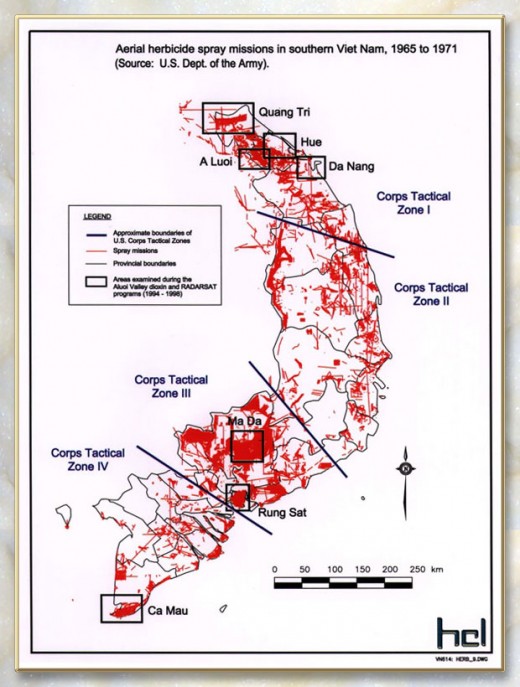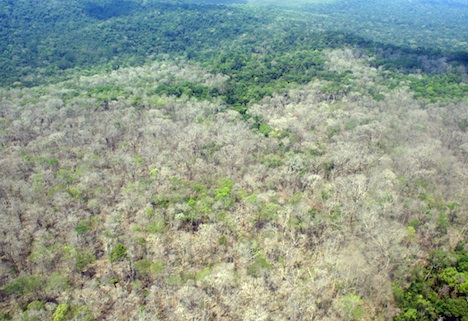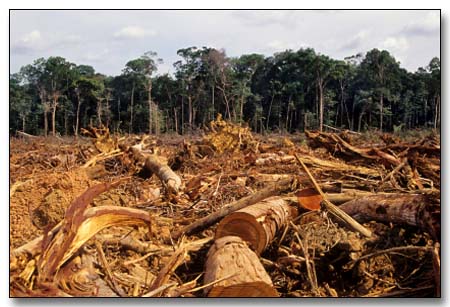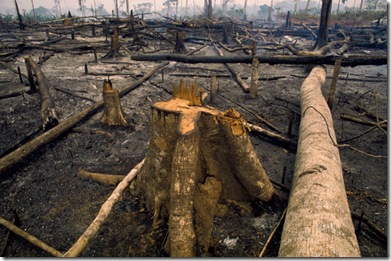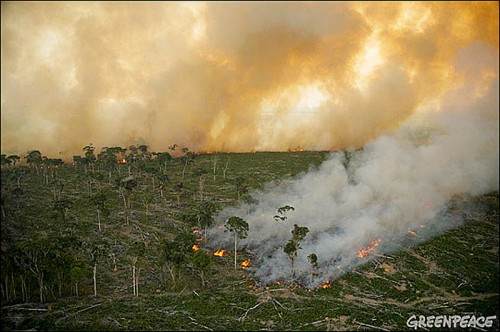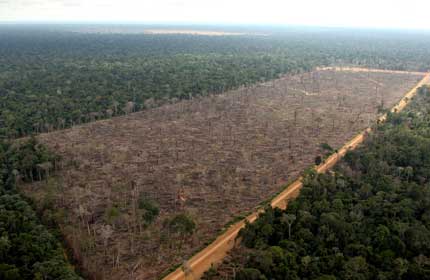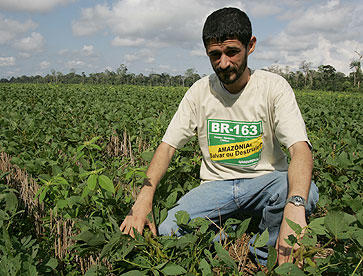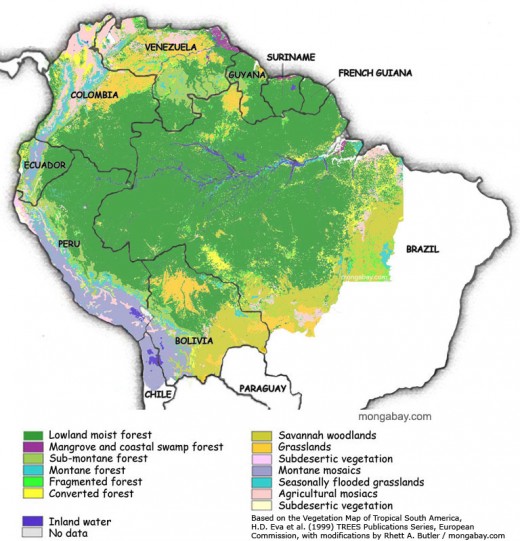America & Australia culpable for Agent Orange
Wednesday, January 4th, 2012 Carcinogenic Dioxin labeled as ‘Agent Orange’
was used as a widespread ecological exterminator by the United States and Australian
governments in last century’s US War Against the Vietnamese People
Carcinogenic Dioxin labeled as ‘Agent Orange’
was used as a widespread ecological exterminator by the United States and Australian
governments in last century’s US War Against the Vietnamese People
.
Agent Orange is the code name for one of the herbicides and defoliants used by the US military as part of its herbicidal warfare program, Operation Ranch Hand, during the Vietnam War from 1961 to 1971.
A 50/50 mixture of 2,4,5-T and 2,4-D, it was manufactured for the US Department of Defense primarily by Monsanto Corporation and Dow Chemical. The herbicides used to produce Agent Orange were later discovered to be contaminated with TCDD, an extremely toxic dioxin compound. It was given its name from the color of the orange-striped 55 US gallons (210 L) barrels in which it was shipped, and was by far the most widely used of the so-called “Rainbow Herbicides”.
During the Vietnam war, between 1962 and 1971, the US Army sprayed 20,000,000 US gallons (80,000,000 L) of chemical herbicides and defoliants in Vietnam, eastern Laos and parts of Cambodia, as part of Operation Ranch Hand. The program’s goal (Ed: tactical theory) was to defoliate forested and rural land, depriving guerrillas of cover; another goal was to induce forced draft urbanization, destroying the ability of peasants to support themselves in the countryside, and forcing them to flee to the US dominated cities, thus depriving the guerrillas of their rural support base and food supply. [Read More]
Source: US Veterans Contact Point & Information Center, ^http://www.usvcpic.us/?p=1835].
 United States Congress approval of widespread defoliant poisoning
of Vietnam, Laos and Cambodia
The US Military code named it ‘Operation Ranch Hand’
during the US declared Vietnam War from 1961 to 1971
^http://www.the-savage-flsjr.com/img/new%20page%203.htm
United States Congress approval of widespread defoliant poisoning
of Vietnam, Laos and Cambodia
The US Military code named it ‘Operation Ranch Hand’
during the US declared Vietnam War from 1961 to 1971
^http://www.the-savage-flsjr.com/img/new%20page%203.htm
.
Agent Orange Human Effect:
.
‘It is the war that will not end. It is the war that continues to stalk and claim its victims decades after the last shots were fired (2). The use of Agent Orange still has an effect on the citizens of Vietnam today. It has poisoned their food and creating health concerns. This chemical has been reported to cause serious skin diseases as well as a vast variety of cancers in the lungs, larynx, and prostate. Children in areas exposed to Agent Orange, or have parents who were exposed to agent orange during the war, have been affected and have multiple health problems–including cleft palate, mental disabilities, hernias, and extra fingers and toes, and many other birth defects.’
‘Recent laboratory tests of human tissue samples ( blood, fat tissue, and breast milk) taken from veterans who were exposed during the war and people living in sprayed areas revealed levels of dioxin higher than levels found in people living in non-sprayed areas of Vietnam as well as people living in industrialised countries. The most noteworthy are the levels of dioxin in breast milk. The high level of dioxin in nursing mothers shows how contamination spreads and bio-acumulates from mothers to their children (5).
Epidemiological studies show an elevated rate of diseases and disorders in people exposed to dioxin. These include high rates of cancers, abnormalities during pregnancies, neurological and metabolic disorders, and especially birth defects.’
Agent Orange Environmental Effect:
.
The consequences of spraying these toxic chemicals continue to have devastating effects on the environment. Millions of gallons of Agent Orange caused a great ecological imbalance.
.
‘It destroyed timber, wild animals and forest products.’
.
Without forest cover to retain water, flooding in the rainy season and drought in the dry season has adversely affected agricultural production. Topsoil is easily washed away, further hindering forest recovery. While the uplands have been and continue to be eroded, the lowlands have become choked with sediment, further increasing the threat of flooding.
[Source: ^http://vietnamartwork.wordpress.com/war-end-agent-orange-effect/].
 Deforested and still contaminated Cam Lo, Vietnam
(Photo by Dr. P.T. Dang, 2004)
Deforested and still contaminated Cam Lo, Vietnam
(Photo by Dr. P.T. Dang, 2004)
.
‘Over 30 years after the war, forest ecosystems on these hills south west of Cam Lo and most landscape in Quang Tri Province, Vietnam, damaged by Agent Orange and by heavy bombing have not been able to recover.
Dioxins in the soil, river bed, and in the food chain are serious sources of health threat; bomb craters (encircled) dotted the landscape, obstruct farming and provide excellent breeding ground for malaria, dengue and other disease transmitted mosquitoes; and unexploded ordnance (UXO’s) still buried in the ground continue to be extremely hazardous to people living in the area.’
[Source: ^http://www.tc-biodiversity.org/vn_ecorestoration_e1.htm].
‘Agent Orange cancer deaths probe – Innisfail forests’
.
[Source: ‘Agent Orange cancer deaths probe’, The Australian, sourced from AAP, 20080518, ^http://www.theaustralian.com.au/news/agent-orange-cancer-deaths-probe/story-e6frg6oo-1111116372310] Agent Orange ‘secretly tested’over the rainforest
at the back of Innisfail, Far North Queensland, Australia in 1966
Agent Orange ‘secretly tested’over the rainforest
at the back of Innisfail, Far North Queensland, Australia in 1966by the Australian Regular Army
.
‘Concerns that cancer deaths are higher in a north Queensland town where the Army tested chemical weapons at the start of the Vietnam War will be investigated by the (Queensland) state government, Premier Anna Bligh says. Australian military scientists sprayed the toxic defoliant Agent Orange on rainforest in the water catchment area of Innisfail in 1966, Fairfax reported today.
The sprayed site, where jungle has never regrown, lies on a ridge about 100 metres above the Johnstone River, which supplies water for the town in the state’s far north.
Figures from the Queensland Health Department show 76 people died from cancer in the town of almost 12,000 in 2005, 10 times the state’s average and four times the national average.
“Any concerns these residents have can and will be investigated thoroughly just as we have when there’s been complaints about unusual cancer rates at workplaces,” Ms Bligh told reporters in Brisbane.
“I would encourage these residents who have any concerns to talk to the Environmental Protection Agency.”
Ms Bligh would not say whether the Army should come clean about its testing of Agent Orange in the region.
“I am not even sure what the facts are behind any Defence Force action in that area,” she said.
“If there has been any suggestion the Defence Force has any matters they should deal with I would encourage people to talk to the federal government and we will be doing the same.”
Researcher Jean Williams, who has been awarded the Order of Australia Medal for her work on the effects of chemicals on Vietnam War veterans, found details of the secret tests at Innisfail in Australian War Memorial archives.
“These tests carried out between 1964 and 1966 were the first tests of Agent Orange and they were carried out at Gregory Falls near Innisfail,” she told Fairfax.
“I was told there is a high rate of cancer there but no one can understand why.
“Perhaps now they will understand.”
.
Ms Williams found three boxes of files in the archives, with one file, marked “considered sensitive”, showing the chemicals 2,4-D, Diquat, Tordon and diemthyl sulphoxide (DMSO) were sprayed on the rainforest.
.
“It was considered sensitive because they were mixing together all the bad chemicals, which just made them worse,” she said.
Innisfail RSL president Reg Hamann, who suffers cancer after being exposed to Agent Orange while fighting in Vietnam, said his children had been born with health issues.
“The amount of young people in this area who die of leukaemia and similar cancers to what I got from Agent Orange is scary.
“The authorities are scared of digging into it as there would be lots of law suits.”
.
Agent Orange being used in the Amazon – July 2011
[Source: ‘Vietnam Era Weapon Being Used to Clear the Amazon’, by Stephen Messenger, Business / Corporate Responsibility, TreeHugger, 20110705, ^http://www.treehugger.com/corporate-responsibility/vietnam-era-weapon-being-used-to-clear-the-amazon.html]
.
Agent Orange is one of the most devastating weapons of modern warfare, a chemical which killed or injured an estimated 400,000 people during the Vietnam War — and now it’s being used against the Amazon Rainforest.
According to officials, ranchers in Brazil have begun spraying the highly toxic herbicide over patches of forest as a covert method to illegally clear foliage, more difficult to detect that chainsaws and tractors.
.
In recent weeks, an aerial survey detected some 440 acres of rainforest that had been sprayed with the compound — poisoning thousands of trees and an untold number of animals, potentially for generations.
Officials from Brazil’s environmental agency IBAMA were first tipped to the illegal clearing by satellite images of the forest in Amazonia; a helicopter flyover in the region later revealed thousands of trees left ash-colored and defoliated by toxic chemicals. IBAMA says that Agent Orange was likely dispersed by aircraft by a yet unidentified rancher to clear the land for pasture because it is more difficult to detect than traditional operations that require chainsaws and tractors.
Last week, in another part of the Amazon, an investigation conducted by the agency uncovered approximately four tons of the highly toxic herbal pesticides hidden in the forest awaiting dispension. If released, the chemicals could have potentially decimated some 7,500 acres of rainforest, killing all the wildlife that resides there and contaminating groundwater. In this case, the individual responsible was identified and now faces fines nearing $1.3 million.
According to a report from Folha de São Paulo, the last time such chemicals were recorded in use by deforesters was in 1999, but officials say dispensing the devastating herbicide may become more common as officials crack down on the most flagrant types of environmental crime.
“They [deforesters] have changed their strategy because, in a short time, more areas of forest can be destroyed with herbicides. Thus, they don’t need to mobilize tree-cutting teams and can therefore bypass the supervision of IBAMA,” says Jerfferson Lobato of IBAMA.
While Agent Orange was originally designed to clear forest coverage in combat situations, its use became a subject of controversy due to its impact on humans and wildlife. During the Vietnam War, the United States military dispersed 12 million gallons of herbicide, impacting the health of some 3 million, mostly peasant, Vietnamese citizens, and causing birth defects in around 500 thousand children. Additionally, the chemical’s effect on the environment have been profound and lasting.
Last month, over three decades after Agent Orange was last used in Vietnam, the US began funding a $38 million decontamination operation there. Meanwhile, in the Brazilian Amazon, the highly toxic chemical was being discovered anew and sprayed over the rainforest.
